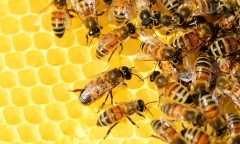By Steve Pak, | February 15, 2016

Woman Sneezing
A high-speed camera recently took photos of over 100 sneezes in order to learn about the spread of infectious diseases from the fluids that fly out of mouths. The results showing the flight of tiny droplets were very gross and contain dangerous bacteria nd viruses. They stress why people should cover their mouth, grab a tissue, or lift the crook of their elbow before sneezing.
Like Us on Facebook
Researchers at the Massachusetts Institute of Technology (MIT) conducted the study. It was published in the journal Experiments in Fluids.
MIT researchers used cameras that snapped 6,000 to 8,000 frames per second (fps), according to Medical Daily. Three volunteers sneezed straight ahead a total 100 times.
Each sneeze lasted about one-fifth of a second. Meanwhile, fluids released during sneezing travel about 100 miles per hour (161 km/hr).
It was surprising that the sneezes did not all follow a uniform cloud of drops. The images captured by the high-tech cameras show that when a person sneezes a sheet of foul fluid balloons, breaks up into long threads, and then spreads into a spray of tiny droplets like throwing paint into the air, according to New York Magazine.
Co-author Lydia Bourouiba is head of the Fluid Dynamics of Disease Transmission Laboratory at MIT. She explained that the findings were very surprising because they thought fluids from the respiratory tract would be fully formed.
Scientists wanted to study the tiny particles called "sneeze ejecta." It could help the MIT team to identify major spreads of infections.
Researchers used multiple volunteers for a reason. They wanted to learn which people were "super spreaders" and which ones had saliva whose fluid stayed in thin threads longer.
Bourouiba reported it is critical to understand how fluid breaks up to learn the size of droplets spreading, and guess the bacteria's range. The MIT researcher explained that methods the medical world uses to learn how diseases spread are centuries old.
Bourouiba's team is now setting up a new lab to test multiple sneezers at one time. They want to study different types of sneezes and coughs to learn how colds and flus are transmitted throughout the year.
Here are some ways to prevent the spread of cold and flu:
-
Use of Coronavirus Pandemic Drones Raises Privacy Concerns: Drones Spread Fear, Local Officials Say

-
Coronavirus Hampers The Delivery Of Lockheed Martin F-35 Stealth Fighters For 2020

-
Instagram Speeds Up Plans to Add Account Memorialization Feature Due to COVID-19 Deaths

-
NASA: Perseverance Plans to Bring 'Mars Rock' to Earth in 2031

-
600 Dead And 3,000 In The Hospital as Iranians Believed Drinking High-Concentrations of Alcohol Can Cure The Coronavirus

-
600 Dead And 3,000 In The Hospital as Iranians Believed Drinking High-Concentrations of Alcohol Can Cure The Coronavirus

-
COVID-19: Doctors, Nurses Use Virtual Reality to Learn New Skills in Treating Coronavirus Patients











